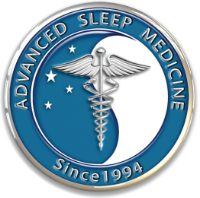If you need to be tested for a sleep disorder, there are a couple different types of tests available: Home Sleep Testing (HST) or a traditional overnight stay in a sleep center. This page will explain the different types of tests and the advantages of each.
Home Sleep Testing (HST)
A Home Sleep Test takes place in the comfort and convenience of a patient's home. Prior to the test, the patient is instructed by a technician on how to use the home-testing machine. The patient then goes home, turns on the machine, and sleeps in his own bed while the machine records metrics like the patient's pulse and the effort he/she is using to breathe. It is a simple, comfortable way to assess if you are suffering from a sleep disorder.
In-Center Sleep Test (Polysomnogram)
A traditional sleep study occurs out of the house at a sleep center. The patient sleeps overnight in a private room. In-center testing permits detailed monitoring of the patient’s brainwaves, oxygen saturation, leg motion, and other critical benchmarks for diagnosing a variety of sleep disorders. A technician oversees the patient throughout the night to ensure the most detailed results possible.











